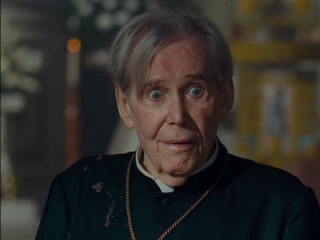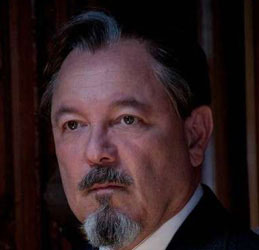Dross
Only a Western in the way that Mexican revolution pictures are Westerns, Pancho Villa stories, for example, or A Bullet for the General, that kind of thing, Cristeros, also known as For Greater Glory: The True Story of Cristiada (any movie claiming to tell us the true story is usually guff) is set in Mexico in the 1920s when President Plutarco Eliás Calles, in office 1924 – 28, was enacting anti-clerical legislation and trying, as he saw it, to free his country from the strangling grip of the Catholic church. Arguably, an elected president was doing what was ordained in the 1917 constitution. What was wrong with that? Plenty, according to his opponents, who took up arms. This led to the so-called Cristero War, which can be seen, as Wikipedia tells us, either “as a major event in the struggle between Church and State dating back to the 19th century with the War of Reform”, or as “the last major peasant uprising in Mexico following the end of the military phase of the Mexican Revolution.” You choose.
However, it is clear that the film gives a very one-sided view. President Calles and the government are reprehensible and repressive, and the Cristeros are valiant and virtuous. The text of the opening screen sets the tone right away:
The movie was partially financed by the Knights of Columbus, so there may just possibly be a link.
In any case, it isn’t very good.
At 145 minutes it’s too long, not having the quality to sustain that. It was the most expensive film ever made in Mexico and it has a definite Cimino vibe. Make it as big as possible; that might mask the lack of quality. They wheeled in a few foreign stars, such as Peter O’Toole as an aged priest martyred by the ruthless Federales. He’s rather creepy, actually. The characters speak English throughout and the movie is clearly aimed at the English-speaking market, especially the US.
It was directed by Dean Wright, who had been 2nd Unit director on The Lord of the Rings: The Return of the King and on The Chronicles of Narnia: The Lion, the Witch and the Wardrobe (I don’t know if that’s a qualification) and it was written by Michael Love, known for Hold it Like a Baby, which doubtless you thrilled to. I’m not sure how expert either was on Mexican history. The Austin Chronicle reviewer said, “The script by Michael Love is all over the place, introducing disparate characters right and left, then following their actions for a little bit before shifting focus to other characters, only to return to the previous characters once the viewer has forgotten their relevance.”
The Cristeros prospered mainly because they hired General Enrique Gorostieta Velarde as their leader. A hero of the revolution and supporter of Zapata, he was a fine strategist. He was in fact an atheist. He said he was fighting for “religious freedom” (though of course that means only freedom for Catholics; even the freedom not to believe seems to have been brushed aside). Really Gorostieta Velarde seems to have taken the job for money. This is the part taken by Andy Garcia, who is rather good.
Garcia quite good
Ruben Blades plays President Calles. I used to like Mr Blades’s music, I must say, back in the
80s. As an actor here he plays it straight according to the script, giving us a ruthless ruler ready to resort to murder and brutal repression to get his way.
The hero is a child, José (Mauricio Kuri, 15) whom Fr O’Toole is training to become an altar boy and who sees the priest die under a firing squad, being so affected by it that he joins up with the Cristeros. This actor was curiously over-made up so that he looked like a character in a stage melodrama, with lipstick and rosy cheeks, once again ever so slightly creepy. Perhaps he is supposed to resemble a plaster saint. He suffers in an ersatz Via Dolorosa moment which the editors should have cut. Pope Francis declared José Sánchez del Río to be a saint in 2016 so I’m sure he was a good boy.
I couldn’t get who half the characters were but there was a fighting priest with crossed bandoliers over his cassock who was quite racy. Then there are the American powers-that-be working behind the scenes to protect US economic interests – we get President Coolidge (Bruce McGill) and Secretary of State Kellogg (Roger Cudney), as well as Ambassador Sheffield (Jake Koenig). The US provides machine guns and planes, as one does. The pressure exerted on Coolidge to support the Cristeros by the Knights of Columbus is not shown, however. I wonder why.
Women play a brave part, carrying ammunition for the Cristeros (not always very carefully).
I didn’t like the music. Apparently James Horner re-used bits of Avatar and Stalingrad but it comes across as sentimental and grandiloquent by turns. I would go so far as to say that it cheapens the action (which was already pretty tawdry).
There are various bits of homespun philosophy of a very unconvincing kind. Between Heaven and earth, between light and dark, between faith and sin [as if these were somehow opposites] lies only my heart. What does this even mean? Or Men will fire bullets but God will decide where they land. Yeah, right.
The real questions are not pursued and the movie was clearly aimed at a rather one-dimensional and sentimental American Christian market.
Dross, basically.







2 Responses
Stumbling on your post today June 22 as it is the anniversary of the 1919 arrangement between the Vatican and the mexican gouvernement to Seattle this revolt, you might be in reading Jean Meyer’s 2014 book
La rébellion des Cristeros, L’Église, l’État, le peuple dans la Révolution mexicaine (CLD Editions) or its richer and illustrations version La Cristiada, la lutte du peuple mexicain pour la liberté religieuse.
Mmm, think I might skip that one. My books-waiting-to-be-read pile already resembles the Empire State bldg.
Jeff